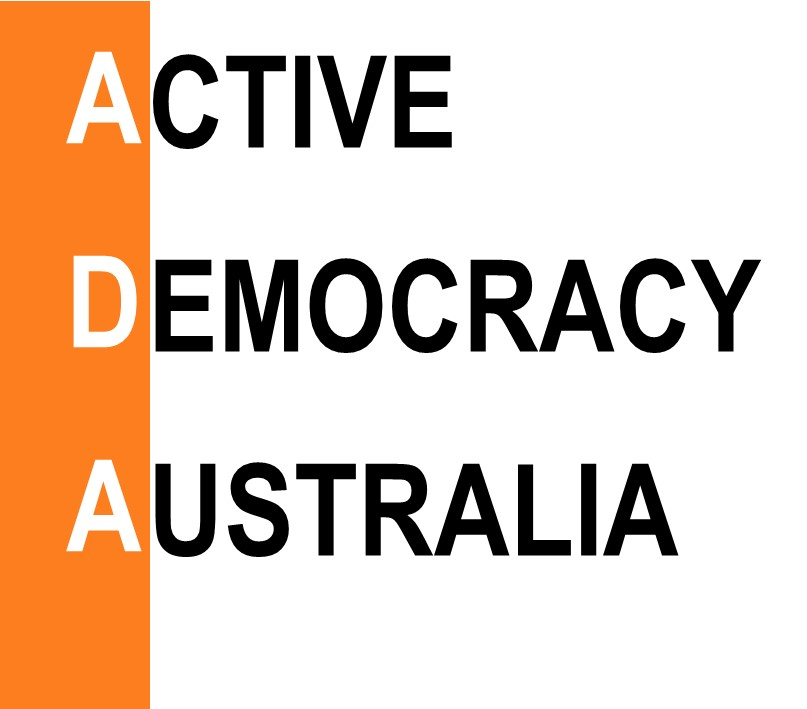Helping an electorate to know itself better
We suggest you read this in conjunction with this section as the two sections are very related.
In each of the 151 Federal Lower House electorates across Australia, about 110,000 voters have one MP to speak for them in parliament and government. An electorate is an artificial construct, based on administrative boundaries that change from time to time and that many voters are unfamiliar with, and it may cover highly diverse populations.
A key task for the electorate group is to enable this diverse collection of voters to be more aware of each other as a community – more aware of each other’s situations, needs and views. In other words, to enable the electorate to know itself better. This way, voters can together start to develop a coherent idea of how they want the MP to represent them in the political system – a way that meets the needs of all constituents and represents their views as broadly as possible. How can they do this?
Organising kitchen table conversations across the electorate will be a good start. This will generate much information about people’s views, values, circumstances and needs – information that can then be turned into a publicly available report. Encouraging people to join the electorate group will have a similar effect. In both cases, the challenge is not just to involve more people; you need to also make sure that the people involved are reasonably representative of the whole electorate.
As well as getting useful information about the electorate from kitchen table conversation and group participants, you can also get it from the following sources:
- Australian Electoral Commission profiles of electoral divisions: If you Google ‘aec profile’ plus the name of your Federal electorate, you’ll find some basic information about the electorate, including a map, the local government areas it covers and a link to current MP details.
- Australian Bureau of Statistics (ABS) Quickstats: If you Google ‘abs quickstats’ plus the name of your Federal electorate, you’ll get a range of demographic information for your electorate, relating to gender, age, education levels, ethnic background, religious affiliation, employment levels, occupations, incomes, family composition, housing circumstances and more, in numbers and percentages. These are compared with figures for your state and the nation. This was produced after the 2016 Census, so if your electorate’s name has since changed, you’ll need to used the old name.
- SBS map of social disadvantage: Scroll down and you’ll see the map. The window above the map allows you to choose from four different measures of disadvantage. Locate your electorate and areas within it using the +/- buttons at the top right to zoom in. If you want to find out more about the measures of disadvantage, click on the links provided.
- The Perfect Candidate: This was produced before the 2019 Election and provided information on the policy priorities of voters in each electorate and the extent to which these aligned with the policy priorities of the MP in that seat (which for party MPs were their party’s priorities).
- Election results: If you Google ‘election results division of [name of your electorate] wikipedia’ you can see the votes for every candidate in every election in that seat’s history. If the seat’s name has changed, you can look up the previous name.
- Local council websites: You can learn a range of things about your electorate from the websites of local councils within it, about public facilities and services, local history, notable features and attractions, and the ethnic make-up of residents. The language and content of the site will also say something about the council’s values, which may in turn be an indication of prevailing values of people living there, for example, attitudes to providing for disadvantaged groups, to local heritage, to the environment, to young people or to cultural pursuits.
- Local media: Perhaps your electorate has some local newspapers, or radio stations (commercial, community or ABC regional). Both editorial content and advertisements can tell you something about the area.
Further to this:
- As well as consulting group participants about the things you need to know, you can also talk to people from local organisations, such as charities, religious groups, ethnic associations, service clubs, youth clubs, residents’ associations, sports clubs, cultural groups, school parents’ associations, Universities of the Third Age, historical societies, traders’ associations, ‘Good Karma Networks’ on Facebook, and meet-up groups.
- Talk to federal and state MPs, local councillors and council officers, schoolteachers, health professionals, shopkeepers, neighbours and others with good connections.
- In traveling around the electorate, observe things: the state of housing, roads and footpaths; the kinds of shops; the extent of traffic, of public transport and of cyclists and pedestrians; the extent of public facilities, parks and street trees; evidence of particular industries; signs of ethnic diversity such as languages spoken and religious buildings, and how thriving or rundown an area looks.
Connect
